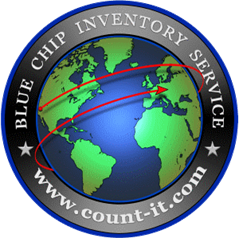
Inventory shrinkage is a serious problem for companies that carry physical stock and it can be incredibly costly. Without the proper checks and measures in place, a business could suffer a significant loss of product, which can directly impact the bottom line. If you own a company that stocks inventory, here’s what you need to know about shrinkage and, more importantly, how you can prevent it from becoming a problem for your business.
What is inventory shrinkage?
This is the term given to the loss of stocked inventory. There are a number of things that can cause a shrinkage situation, including employee theft, damage, administrative errors or mishaps that occur when transporting inventory between locations. When inventory is shrunk, those products or materials can no longer be used to profit your business, which means a net loss overall.
What can be done to prevent inventory shrinkage?
The steps taken to minimize shrinkage will ultimately depend on the type of issue your business is facing most often. For instance, if you believe the cause of your inventory problems is employee theft, measures should be taken to correct the issue, such as installing surveillance cameras, conducting frequent audits and implementing anonymous reporting policies.
Developing better employee training and education can be effective in reducing the amount of inventoried items that become damaged due to negligence on the part of warehouse workers.
For other issues, such as those involving miscalculations by administrative workers, there are certain steps you can take to reduce or hopefully eliminate the problem altogether. For example, switching to an inventory management software program that incorporates barcode scanning and other automated features can dramatically cut down on manual errors.
Inventory management software can also be helpful in reducing the number of products lost due to spoilage, since it can facilitate a better rotation of stock. By keeping older stock up front and ensuring that it sells first, you’ll be much less likely to end up with expired items that you can’t sell.
Think of it as an investment versus an expense.
Of course, changing your internal policies, increasing education for employees and adopting an inventory management system will all come at an upfront cost. Some, such as employee training, will be an ongoing expense. But if you view these things more as an investment in the overall health of your business and consider the savings you’ll achieve by reducing or eliminating your inventory shrinkage problems, you’ll find that it’s well worth it.
Could you use assistance with this or other inventory management issues? Give us a call today!


This calculator can help you determine the selling price for your products to achieve a desired profit margin. Try It Free >
Our Audit/Verification Service is available globally - from Thousand Oaks, CA to Timbuktu. Learn More >
Don't just take our word for it. Find out what our clients are saying about our services.
See actual testimonials >
From Retail and Gross Margin Inventory reports, to SKU and Price Verification reports, Blue Chip Inventory provides complete inventory service. See samples >






